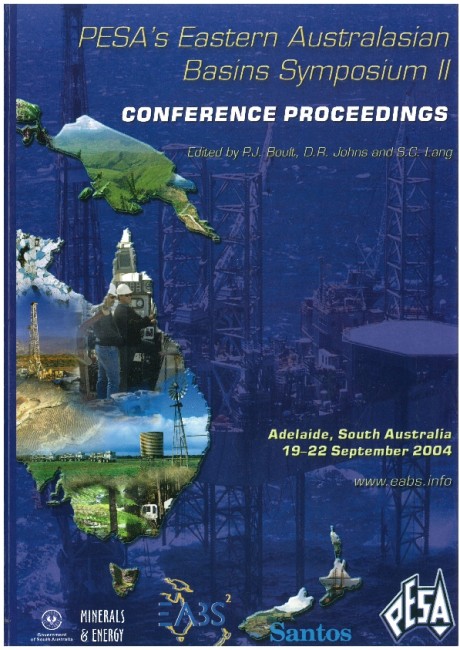Publication Name: PESA's Eastern Australasian Basin Symposium II
Authors: K.C. Hill, N. Hoffman, G. Channon, S. Courteney, R.D. Kendrick and J.T. Keetley
Date Published: December 2004
Number of Pages: 33
Reference Type: Book Section
Abstract:
The Taranaki Basin was formed by Late Cretaceous eastern Australasian rifting, followed by deposition of syn- to post-rift Palaeogene coal measures, which contain both source rock and reservoir horizons. During Oligocene regional subsidence, turbidite sandstone and carbonate reservoirs were deposited in the onshore basin, sourced from basement highs to the east. Miocene compression created a fold and thrust belt, including all the traps currently on production. Pliocene-Pleistocene subsidence and burial led to hydrocarbon generation and migration, filling the traps. The large, deeply detached inversion structures, such as Kapuni, are relatively well understood. The adjacent Waihapa-Toko structure to the east, within the Tarata Thrust belt, is interpreted to overlie relatively shallow basement in the footwall of down-to-the-west Eocene normal faults. It is detached at approximately 8 km, just above basement, and formed as a break-thrust anticline. The transition to the more shallowly detached Ahuroa anticline along strike to the north occurs by overlapping detachment zones rather than across a tear fault. Further north, the Ahuroa and Tariki structures are imbricate thrust anticlines, both with thrust slivers beneath the main thrust that may have potential as fracture porosity reservoirs. Ahuroa was thrust towards the west, but Tariki was formed as a back-thrust-being underthrust to the west- to create a triangle zone. The Tariki thrust was oversteepened by inversion of an underlying Eocene extensional fault that helped create a regional deep syncline beneath the Ahuroa-Tariki trend. The regional syncline lies up dip of the inversion structure, which may constitute a large hydrocarbon trap that is mappable on existing 2D seismic data.

